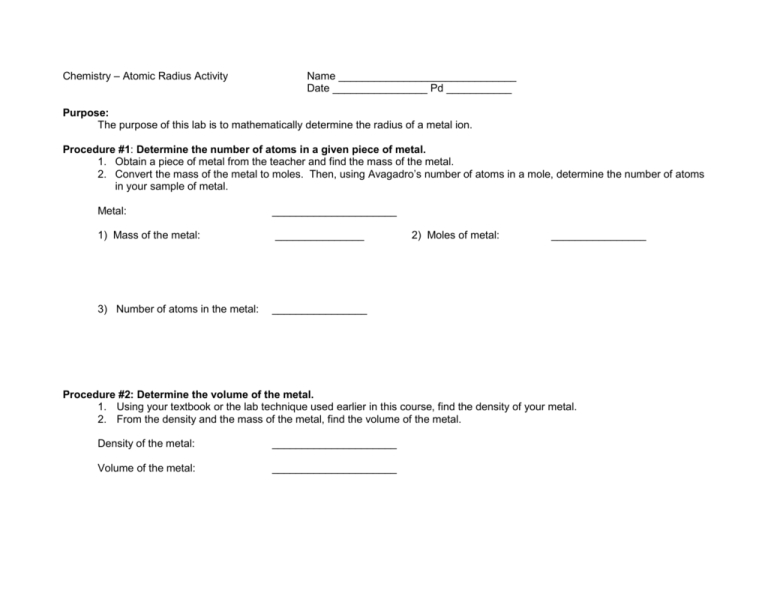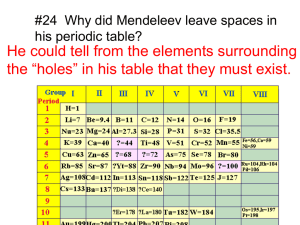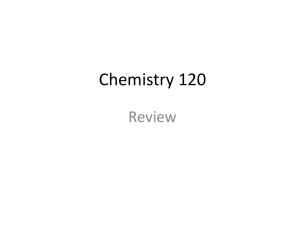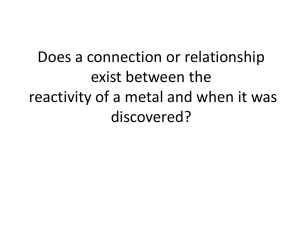Chemistry – Atomic Radius Activity
advertisement

Chemistry – Atomic Radius Activity Name ______________________________ Date ________________ Pd ___________ Purpose: The purpose of this lab is to mathematically determine the radius of a metal ion. Procedure #1: Determine the number of atoms in a given piece of metal. 1. Obtain a piece of metal from the teacher and find the mass of the metal. 2. Convert the mass of the metal to moles. Then, using Avagadro’s number of atoms in a mole, determine the number of atoms in your sample of metal. Metal: _____________________ 1) Mass of the metal: _______________ 3) Number of atoms in the metal: ________________ 2) Moles of metal: ________________ Procedure #2: Determine the volume of the metal. 1. Using your textbook or the lab technique used earlier in this course, find the density of your metal. 2. From the density and the mass of the metal, find the volume of the metal. Density of the metal: _____________________ Volume of the metal: _____________________ Procedure #3: Determine the volume and radius of a single atom. 1. Divide the volume of your metal by the number of atoms in the metal. This calculation is the volume of a single atom. 2. Using the equation for the volume of a sphere, V = , calculate the radius of a single atom. Volume of a single atom: _______________ Radius of a single metal atom: Refer to the textbook to find the expected atomic radius: Calculate the % error of atomic radius. _______________________ _________________ _______________________ Questions: 1) Refer to the diagram below to help explain why there is error associated with this method of determining the size of an atom. 2) Use the table of atomic & Ionic radii below to explain the periodic trend of atomic radius. Use the correct terminology to explain your answer (period, group, atomic number, atomic radii). Ionic radii The size of atoms is difficult to define, let alone measure. The size is determined by maximum charge density, which itself is a function of the type and number of nearest neighbor atoms. Therefore it is possible to assign each ion a radius such that the sum of the radii of two adjacent ions is each to the interatomic (separation) distance. Thus we can determine effective radii by measuring bond lengths in crystals. (see the image below) Paraphrase this statement to explain how the sizes of atoms are measured. 3) Use the table of atomic & Ionic radii below to explain the periodic trend of ionic radius. Use the correct terminology to explain your answer (period, group, atomic number, ionic radii).








